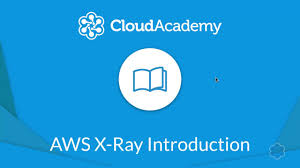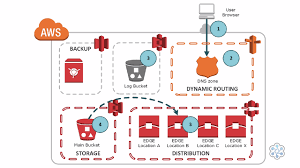Using AWS Storage for On-Premises Backup

Using AWS Storage for On-Premises Backup Free Download
Description
Course Description
With an on-premises data backup solution within your data center, it’s critical for your business to have a disaster recovery plan built into your business continuity plans. You need to have a plan in place should a disaster occur that affects your operation of the business. The same is true when you start to leverage the cloud for its storage capabilities for your backed up data.
This course explains how cloud storage fits in with DR and the different considerations when preparing to design a solution to backup your on-premise data to AWS. It will explain how Amazon S3, AWS Snowball, and AWS Storage Gateway can all be used to help with the transfer and storage of your backup data.
You should not assume that just because you are backing data up to the cloud it will solve your every need, there are many points of consideration when planning a DR backup solution to the cloud, such as AWS. However, it does also open opportunities to you that may not have been possible with a standard on-premises backup solution. It’s these points of interest that many enterprises are focusing on to gain a significant advantage when it comes to disaster recovery.
AWS offers a number of different services available to help you architect the best solution for your needs. To allow you to set up the correct solution that works for you, you must first understand how each of these services can be of benefit to you.
To help you implement effective solutions, you must first have answers to the following:
- What is your RTO (Recovery Time Objective)?
- What is your RPO (Recovery Point Objective)?
- How quickly do you need to retrieve your data?
- How much data do you need to import/export?
- What durability is required for your data?
- How sensitive is your data?
- What security mechanisms are required to protect your data?
- Do you have any compliance controls that you need to abide by?
When you have answers to these questions, you will be able to start working towards an effective backup solution to create a cost-efficient, highly reliable, durable and secure data backup storage solution.
Learning Objectives
- Gain an understanding of how your storage solution can affect your business continuity and DR plans
- Obtain the knowledge to know when to use specific AWS storage solutions to your advantage between Amazon S3, Amazon Glacier, AWS Snowball and AWS Storage Gateway
- Understand how each of these services can provide a DR solution to fit your specific needs
Intended Audience
This course has been designed for:
- Engineers who need to manage and maintain AWS storage services
- Architects who are implementing effective data backup solutions from on-premise to AWS
- Business continuity management managers
- Anyone looking to prepare for the AWS Solutions Architect – Professional certification
Prerequisites
As a prerequisite to this course you should have a basic understanding of the following:
- Business continuity
- Disaster recovery
- Data backup terms and methodologies
- Amazon S3
- Amazon EC2
- Elastic Block Store (EBS)
Course Description
With an on-premises data backup solution within your data center, it’s critical for your business to have a disaster recovery plan built into your business continuity plans. You need to have a plan in place should a disaster occur that affects your operation of the business. The same is true when you start to leverage the cloud for its storage capabilities for your backed up data.
This course explains how cloud storage fits in with DR and the different considerations when preparing to design a solution to backup your on-premise data to AWS. It will explain how Amazon S3, AWS Snowball, and AWS Storage Gateway can all be used to help with the transfer and storage of your backup data.
You should not assume that just because you are backing data up to the cloud it will solve your every need, there are many points of consideration when planning a DR backup solution to the cloud, such as AWS. However, it does also open opportunities to you that may not have been possible with a standard on-premises backup solution. It’s these points of interest that many enterprises are focusing on to gain a significant advantage when it comes to disaster recovery.
AWS offers a number of different services available to help you architect the best solution for your needs. To allow you to set up the correct solution that works for you, you must first understand how each of these services can be of benefit to you.
To help you implement effective solutions, you must first have answers to the following:
- What is your RTO (Recovery Time Objective)?
- What is your RPO (Recovery Point Objective)?
- How quickly do you need to retrieve your data?
- How much data do you need to import/export?
- What durability is required for your data?
- How sensitive is your data?
- What security mechanisms are required to protect your data?
- Do you have any compliance controls that you need to abide by?
When you have answers to these questions, you will be able to start working towards an effective backup solution to create a cost-efficient, highly reliable, durable and secure data backup storage solution.
Learning Objectives
- Gain an understanding of how your storage solution can affect your business continuity and DR plans
- Obtain the knowledge to know when to use specific AWS storage solutions to your advantage between Amazon S3, Amazon Glacier, AWS Snowball and AWS Storage Gateway
- Understand how each of these services can provide a DR solution to fit your specific needs
Intended Audience
This course has been designed for:
- Engineers who need to manage and maintain AWS storage services
- Architects who are implementing effective data backup solutions from on-premise to AWS
- Business continuity management managers
- Anyone looking to prepare for the AWS Solutions Architect – Professional certification
Prerequisites
As a prerequisite to this course you should have a basic understanding of the following:
- Business continuity
- Disaster recovery
- Data backup terms and methodologies
- Amazon S3
- Amazon EC2
- Elastic Block Store (EBS)
DownloadUsing AWS Storage for On-Premises Backup Free Download Free
https://2speed.net/file/5FB822B9F4D1
https://1fichier.com/?967c8mkj1k4b6p8mcz72
https://drive.google.com/a/vimaru.vn/file/d/15CAHcv_AMm7kgrj3fKzBj9xbGXls-n1r/view?usp=sharing
https://drive.google.com/a/vimaru.vn/file/d/1LUv0X8jlgGTYHyRPTvdCl_3Hk31P8xJ4/view?usp=sharing
https://uptobox.com/sb0gh7hg76gh




